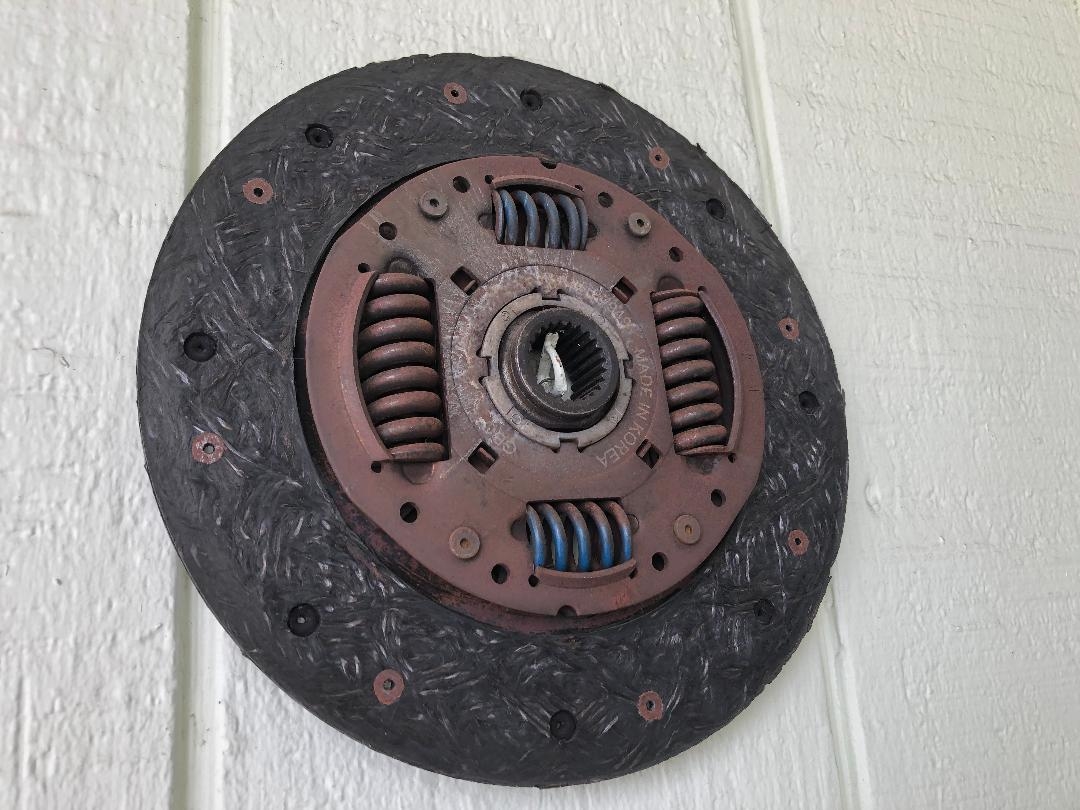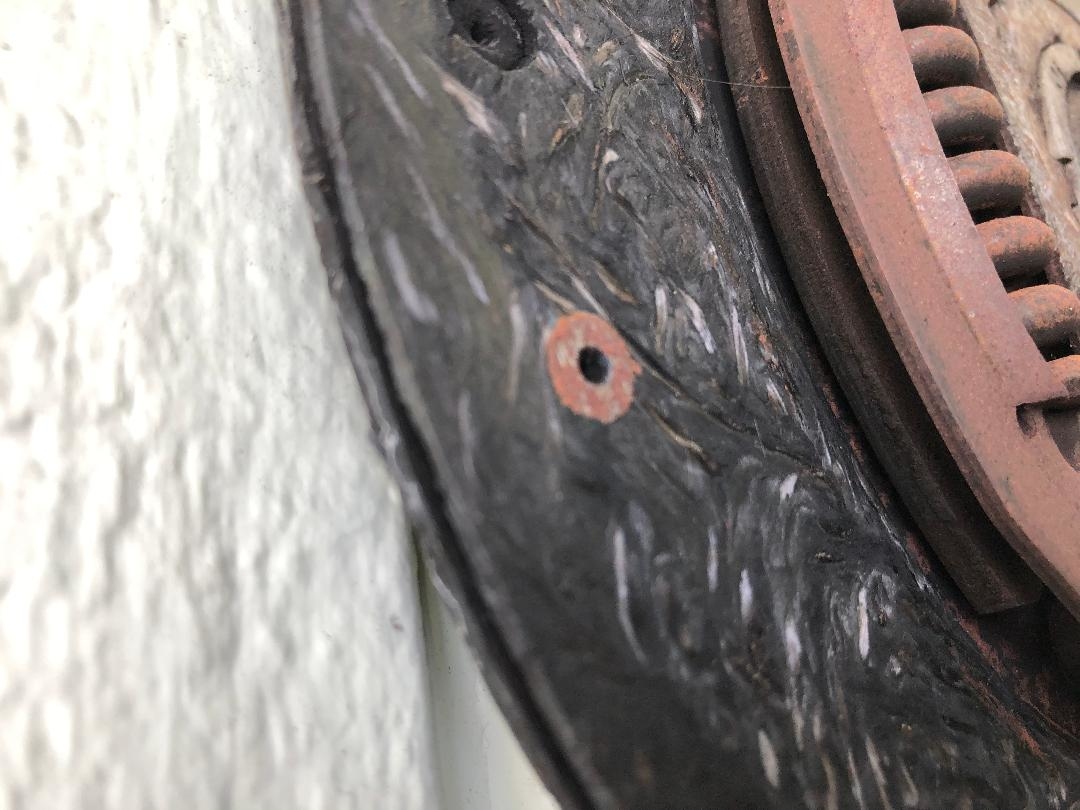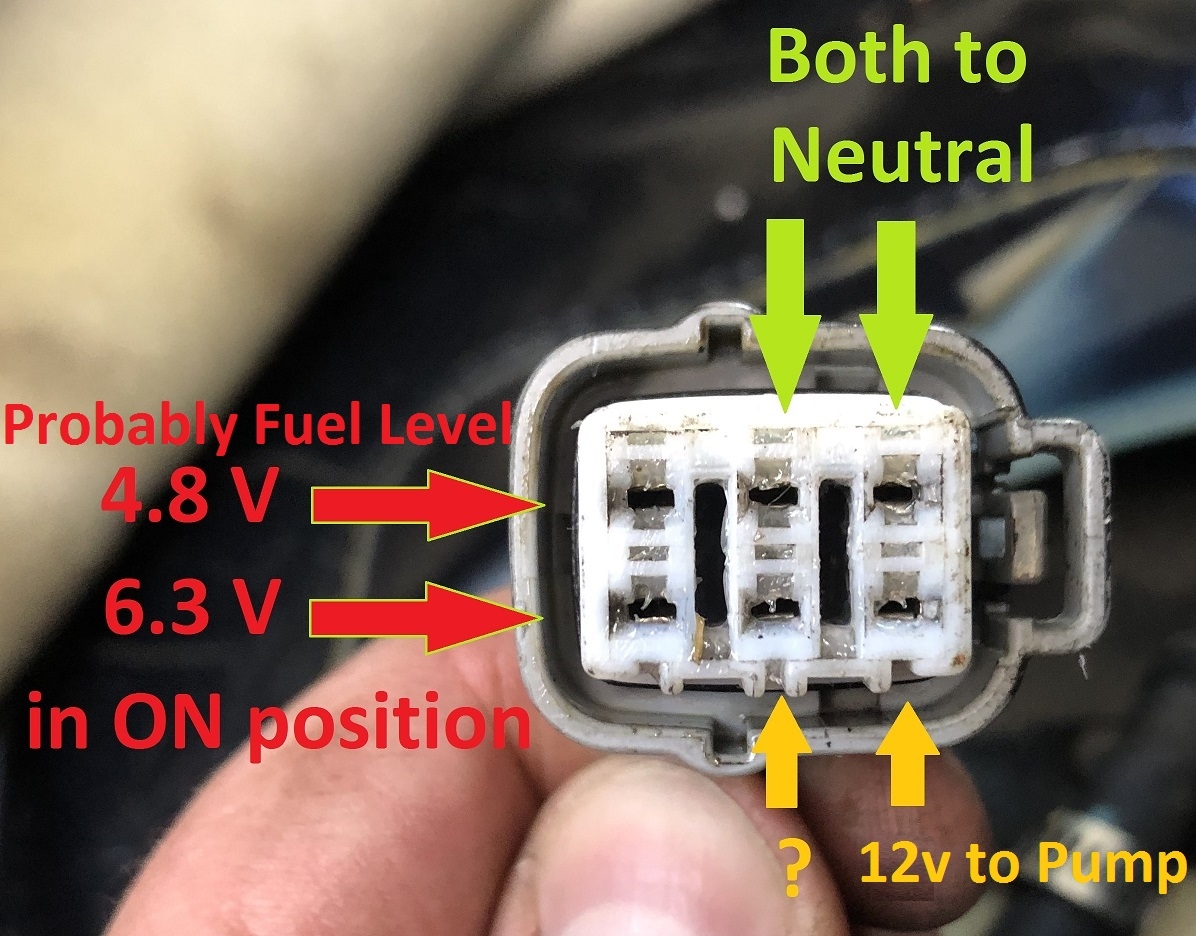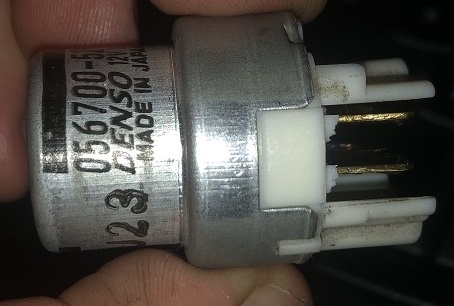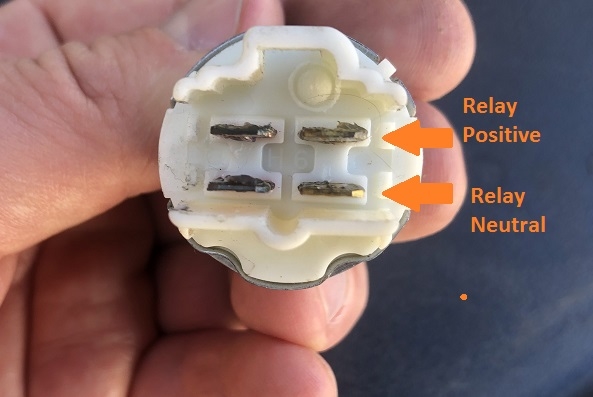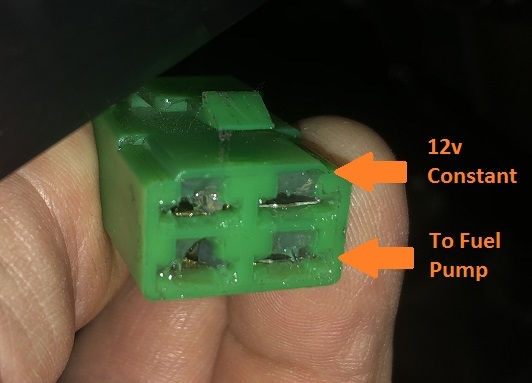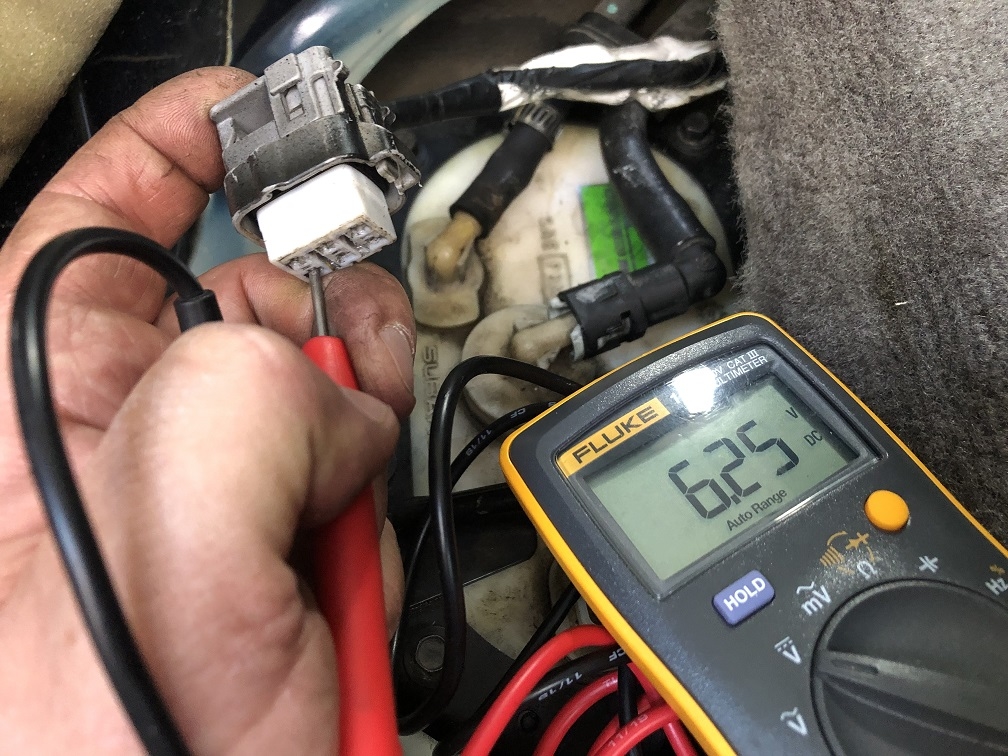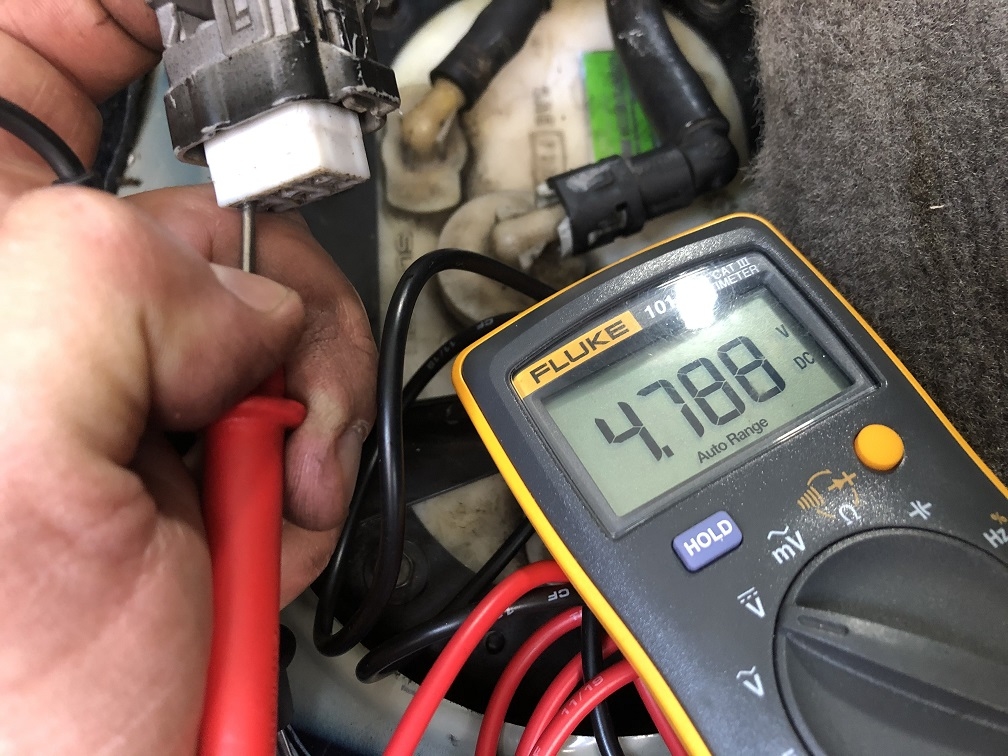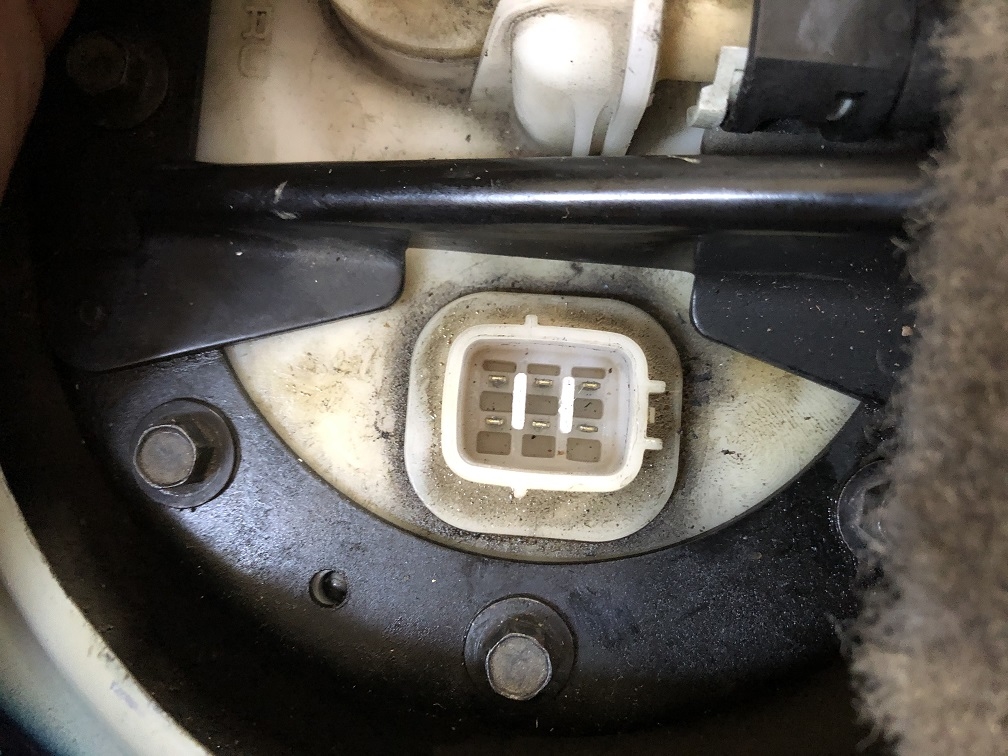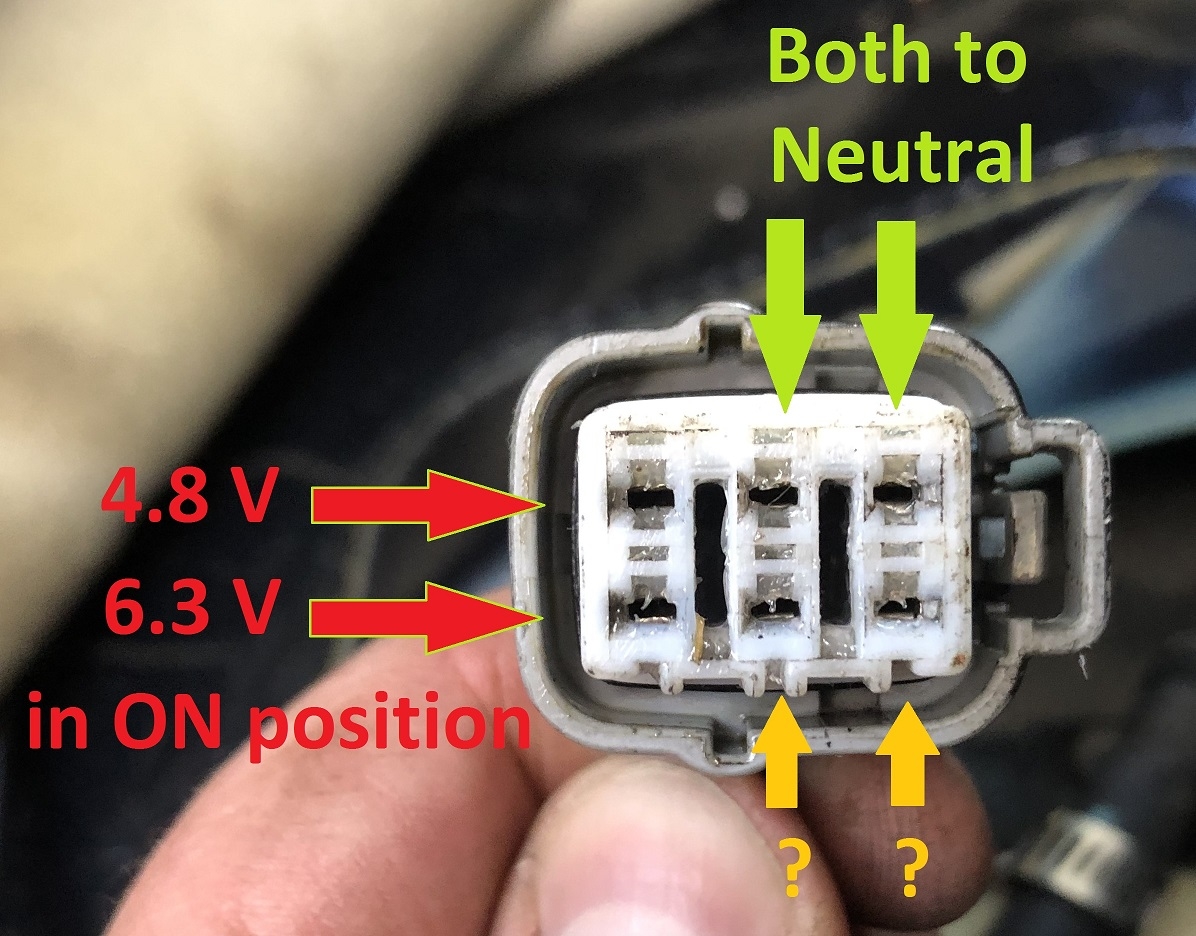-
Posts
118 -
Joined
-
Last visited
-
Days Won
3
Content Type
Profiles
Forums
Gallery
Store
Everything posted by dirty_mech
-
Yep, it was the starter. Swallowed some pride and put in a new one, and now it starts right up like a champ. Sounds like a totally different engine, in fact. I was trying to follow standard diagnostic procedure of testing the cheapest and easiest to uninstall parts first, but it would seem that the starter is so much more likely to be the cause of any issue that you might as well start off by replacing that. I don't regret replacing the relay because it did improve the responsiveness of the old starter and those do go bad as well, but now I know to not waste time trying to rebuild just the solenoid. The one I bought was a rebuilt one from Mexico. If they can do it there then we ought to be able to do it here. The solenoid rebuild kit is a real tease otherwise. Anyone got a clue what would be needed to repair the commutator inside the motor itself? I assume they don't have a kit for rebuilding that like they do for the solenoid. I didn't get a junkyard one because, despite there being nearly a dozen Subarus in in the local yard, none of them were the right model year with a manual transmission; 5 with an automatic but none with a manual. So they weren't compatible according to the Subaru parts website, and I ended up going to a parts store instead.
-
Found this video on replacing the subframe of a 2000 Outback. I couldn't identify any spacers on the subframe when it was being examined or uninstalled. Add that to the lack of different parts in the official diagrams, and now I'm confused. Maybe the 2000 Legacy and 2000 Outback subframes actually are identical, and the scissor jack trick is just necessary to install the rear struts?
-
Just trowled the OEM parts on the Subaru parts website, and I can't seem to find the OEM Outback spacers for a 2000. All the diagrams are identical, no different parts that I can see besides the strut assemblies themselves. Still a lot of sources indicate that there is a difference with regards to spacing.
-
I read one of those threads more and a suggestion came to mind: Take the spacers off a junkyard 2000-2004 Outback and use those?? I haven't studied the grundle of an Outback recently but it wouldn't surprise me if the factory subframe was identical to the Legacy just with added spacers. It might be a straightforward solution but I hear unbolting the subframe is actually a lot of work. Wish there was an easy fix.
-
So I have a 2000 Legacy L Wagon and the exhaust scrapes the ground. I bought 2000 Outback struts to put on it and get some lift as I've heard they are easy to swap. I'm currently attempting to swap the rear struts, and have begun to suspect I've made a grave error. The strut will not compress enough to meet the bolt hole in the trailing arm; it bottoms out about a centimeter below it. I've tried pushing the trailing arm down but haven't had much luck. I could loosen all the control arm bolts to see if that gives me enough wiggle room to get installed. However, I've seen online that I may need rear subframe spacers. Sources online and in this forum indicate that the 96-99 Legacy and Outback struts are interchangeable, but starting in 2000 and going to at least 2004 they use a "multi-link" rear suspension which requires spacers when switching from Legacy to Outback struts: From this discussion: Also see this discussion: https://www.subaruoutback.org/threads/lifting-my-00-04-legacy.53644/ Now it appears I will need to get this subframe spacer kit. I see the difference in height between the rear Legacy and Outback struts is roughly 45 mm or 1.75". A poster in the forum thread above, however, uses 3" subframe spacers to achieve a total lift of 4". So I am a little confused as to what parts and what size parts I may need. Does anyone have experience lifting a 2000-2004 Legacy, especially by using Outback struts? Are there any surprises I should watch out for on the front axle while I'm at it?
-
Bloody hell with this starter.... giving me issues AGAIN! Sputtering when attempting to engage, like it's not getting consistent power. I suspect the clutch starter safety switch may be on the fritz. Another possibility that came to mind is the ignition starter switch. Has anyone heard of an ignition starter switch going bad such that it would cause the starter to sputter and cut out like a bad electrical connection? It's possible it is the starter itself, but I'm really hoping it's not because I just rebuilt the solenoid. The starter will crank just fine most times, so it makes me think it's an electrical circuit issue. Also, I noticed the issue is worst in the morning when I haven't driven the car recently. It might not start for several seconds when attempting to turn over the engine first thing in the morning. So the issue seems to be worst when the car hasn't been run recently and the temperature is low. I've also read that Subarus which came with alarm systems installed at the factory have an additional relay somewhere in the starting system circuit. I see the security system sticker on my window but never used the security system and don't even know if it operates at all. I haven't been able to find any such second relay on my vehicle but I don't quite know what to look for or where. If anyone know about the starter-security system relay, please enlighten me.
-
Well guys I think I found another thing that was causing this issue; the starter relay. The starter began to give me more trouble a couple weeks ago and after my experience with the fuel pump relay, I decided to identify and replace the starter relay. It's a square blue thing very close to the fuel pump relay, branded by Nissan in my case. Replacing it eliminated most of my starter issues. I'm glad it turned out to be the relay because I just rebuilt the starter about a month ago, so that saved me a lot of pain. Opened up the old relay for shits and giggles, and there was nothing wrong with it other than a tiny bit of black carbon-like buildup on the two contact points. The starter still occasionally has a bit of a hesitation when starting, but only on rare occasions. I suspect it could be the clutch switch or associated safety relay. If it becomes common enough to be annoying, I will replace those parts of the circuit as well. Based on these recent experiences, I have to recommend to anyone: If you replace the fuel pump, replace its relay as well. If you replace the starter, replace the starter relay too. These relays definitely go bad, and the randomness of it can be really annoying. Keep the old ones as you can use them as diagnostic tools and emergency replacements in the future. I keep my spare fuel pump relay in the ashtray. The fuel pump is very small and light as well and can easily be changed on the road. I ordered a cheap $30 one as a spare so I don't have to fear another fuel system failure anytime soon.
-
I've seen this in Romex or other conductor with more than one wire on 120v AC circuits. Wire A will be energized at 120v, and Wire B which is neither grounded nor energized will show some amount of voltage (usually within 5 - 50 volts) when tested, but only because the energized Wire A is adjacent to it in the same run of line. I don't necessarily think it has the amps to actually shock you if you were to touch it, and I'm guessing the voltage would probably disappear as soon as you grounded the wire. I'm not sure what this phenomenon is called or about, but I might have seen it referred to as sympathetic voltage. Maybe Jonathan has a clue.
-
Woah this old thread blew up outta nowhere! And on a comment I totally missed. Props to Jonathan for rocking a little of the electrician version of the marine copypasta on Rampage. You guys crack me up! My first though was "Theoretically, yes, but I've never noticed that kind of interference on a meter, and if you touch the vehicle metal then there would be no static charge." And that sounds like what it boils down to. I'm not sure if I grounded myself but I probably was because of the doorframe or body metal at the pump. But I also work on AC and as far as forming habits go, I'd say you want to avoid carelessly touching the probe or any piece of metal that might be energized, and even when it is DC just to reinforce the habit. But it's hard to take a picture with one hand and hold a probe with the other hand holding two probes to show a reading on the meter. That's why that picture looks awkward; I'm trying to hold those two probes like a pair of crossed chopsticks and keep pressure on them. I'm sure most here already know but I forgot to mention the 12v at pump connector will only show 12v for a moment when you first turn the key on then go off after the pump pressurizes the fuel line. You have to test it for 12v right when you turn the key then you can eliminate a wiring issue as a cause before deciding to replace the pump.
-
Hey Bennie, thanks for the explanation on how the pull-clutch works. Those turbos sound complicated but I bet they are fun to drive. It's entirely possibly I'm just a jackass with an overloaded, underpowered vehicle driving around on too many inclines. But a man can dream, can't he!? I had never heard of NA-T (naturally aspirated to turbo) conversions on Subarus before, but I see that's a popular thing. Very interesting, thanks for the heads up! So would it be possible to use a 2006 WRX turbo clutch on my 2000 EJ251 NA engine? Would I need the turbo pressure plate and flywheel as well, or would the disc work with the stock non-turbo EJ25 components? Thanks for the advice on the pressure plate. In that case, I will keep an eye out for kits rather than just the disc. 30k is probably what will be on this clutch when I do replace it around New Years or whenever it gives out. It's actually still in pretty good working condition and I haven't felt any slippage for days, but I don't want to risk unexpected down time again. This past year has been like a college class in auto repair with all the parts that have gone bad on my poor Legacy.
-
I'm just going off what freddo said. I'm as curious as you are. I looked on Amazon and the turbo clutches appear to look similar, although the flywheel is different. I don't know what a pull-style clutch setup is all about; does that mean the clutch fork pulls the bearing away instead of pushing it forward? If something like that was the case then it would make sense that the turbo gearbox is configured differently.
-
Interesting! I didn't even realize cars had a main relay. Just a couple weeks ago my starter relay (also near the fuel pump relay) went out. I was ready to replace the starter whose solenoid I had just rebuilt, but it turned out to once again be the relay. Took apart the old relay for shits and giggles, and the only thing wrong with it was a little bit of black arcing deposits on the two contacts. I don't know if 20 years of regular use is just a typical lifespan or what, but I might get a head start on replacing the main relay and any other critical relays that could leave me stranded if they go bad. I now keep an extra fuel pump relay in my ashtray, and an extra fuel pump in my cargo area, just in case either goes bad on me in the future. Never had my air intake system make noise to my knowledge, but it's possible. I'll check to see if any of the air housing is loose, and check the filter too.
-
Would it be that big a difference between stock and aftermarket organic clutches? Freddo seems pretty convinced that "any organic clutch" should perform well. I haven't had experience with poor quality clutch parts, but I am pretty cautious about buying anything that doesn't seem of verifiable and reasonable quality. I agree that you should definitely not go cheap on parts, but you have to make sure the cost corresponds to quality. I'm not necessarily going to praise stock parts and avoid aftermarket unless there's a known issue with aftermarket parts being inferior to stock. They often are like with head gaskets, but the dealer oil filter for example is just a Fram filter that's been repainted with the Subaru logo, and I won't be putting either on my engine anytime soon. As far as the clutch goes, I'd be interested to hear if you think getting a stock Exedy one would make a big difference. Definitely a lot of Craigslist specials in my past but I've put new clutches in on at least three of them. Never had problems until I had to start using my wagon like it's a service truck. I'm sure it would be fine without the extra weight, but other factors are combining to give me trouble. Not only do I have the heavy load in the car at all times, but there's a lot of neighborhoods on steep hills where I drive. I also have to deal with 5% of people on the road drive like they're raging on meth and another 5% drive like they're stoned of their minds, people who feel entitled to block lanes of traffic anytime they like, and the occasional person who does something so moronic it defies categorization. It all adds up to a lot of braking and acceleration and shifting, all with that heavy load in the car, which isn't doing the clutch any more favors than those steep hills. I'm sure the OEM clutch would operate well under normal conditions, but I'm just not operating under normal conditions. I'd like to find something that can last longer, or provide better performance, or ideally both. I may be wrong but I suspect there's a better option out there, and I'm willing to take the chance that I'm wrong to find out. The turbo clutch sounds intriguing but freddo indicates I would need a whole different gearbox. I'm interested in getting more clutch power but I'm not not willing to go so far as to replace my transmission. It's possible I have a really bad clutch, or it's just all the extra engine load. I feel the high revs are sometimes needed to prevent the engine from conking out, which I will do at lower revs sometimes, so maybe the issue really is the engine power being too low and not the clutch. Or maybe I'm just getting the engine revs up too high when I try to avoid killing the engine. Hard to say. I certainly see how that type of slippage could generate too much heat and damage the flywheel. That's one thing that concerns me about possibly using a ceramic clutch, as it will surely put more wear on the flywheel just as ceramic brakes do on rotors.
-
Not all the time, just 1/3 or so. I'm not saying I drive my Legacy like Miles Fox used to drive his trashwagons, but sometimes I might. I do try to avoid jumps nowadays though. It's hell on the suspension when you do it with 500 lbs of crap in the back. I've already had to replace a blown shock which was only a couple years old and several heavily worn control arm bushings, which is rough work I don't want to have to repeat. About to throw some Outback shocks on it now so my exhaust stops scraping inclined driveways. I've driven a number of EJ22 and EJ25 wagons and I'm just not impressed with the OEM clutch power. With the OEM EJ22 disc it's a known issue, but I'm not very impressed with any improvement they might have made on the EJ25. Too much slippage; I'd rather have the engine stall than get hit by that nasty burning asbestos smell of organic clutch ever again. It's probably just fine if you aren't hauling a lot of weight, but I like to use the back of my Wagon like it's a truck bed, and the steep hill neighborhood are likely to be on my itinerary for the foreseeable future. I need a clutch that will grip solidly and keep up with the engine when I need to crank out those high RPMs under heavy load to get the car moving on hills. I know the engine has more power; the weak link is the clutch. Duly noted on the 6-puck clutches. I've also read that before on this forum. I'm tempted to try it to see if I like the extra clutch power, but I'm worried the car will jump like a jackrabbit when first moving and fight the engine too much when shifting if it isn't done perfectly, making the ride rough as you describe. I'm leaning towards a Stage 2 or higher clutch disc with a non-organic material like carbon fiber or ceramic, but which retains the full radius shape of the OEM disc. The EXEDY FJD016CB Stage 2 cerametallic clutch disc mentioned in my OP would be a good example, but I don't want to drop $350+ on a part unless it has rave reviews, and I don't see any on the Amazon page for it. I do see on Amazon a similar ceramic disc in a clutch kit by Southeast Clutch, # 15-004, for about $110. The handful of reviews all seem positive and more than one mentions that the clutch pedal feels the same as stock. If anyone has any experience with non-puck, non-organic clutch discs, I'd be interested to hear about it.
-
In December 2019 I replaced my 2000 Legacy wagon's clutch with the M-PACT 15004 clutch kit from RockAuto. The old one was slipping hard and had worn the disc down to the metal rivets. On the new clutch, I believe I recently detected a tiny amount of slippage during hard acceleration in 1st or second gear, and suspect I'll need to replace the friction disc again later this year, which means I'll have gotten about 2 years out of it. It's not surprising, and I don't necessarily blame the quality of the part other than having basic performance. My Legacy carries a heavy load of tools and parts at all times, roughly 400-500 lbs. This has led to me burning the disc at least a dozen times since replacing it, usually when reversing uphill after parallel parking on crowded streets. The Legacy just can't take it when carrying a heavy load. I've since learned to be wary of neighborhoods built on steep hills. I never park my Legacy anywhere that would force me to reverse up anything more than a very mild incline so I don't burn the clutch. I also have a somewhat aggressive driving style in urban city streets, and sometimes need to rely on hard acceleration to get me past obstacles in dynamic traffic situations. I need a recommendation for a strong replacement clutch disc that will put up with the heavy load I regularly carry and hard acceleration in lower gears. I don't suspect that I need to replace any of the other parts since they were replaced in the past 2 years, just the disc, although I'm intrigued by some of the clutch kits which include a replacement flywheel. The standard M-PACT friction disc would probably be fine for a person who drives normally in car that isn't loaded down, but I'd rather avoid replacing my clutch disc every 2 years. I'd like one that could last me a good 5 years if possible. The current OEM dealership part is Subaru part # 30100AA851, going for $180 dollars. Based on what I saw in the forum search for clutch info, I'm guessing this one is produced for Subaru by Exedy, It appears identical to the Exedy FD501D Stage 1 organic clutch disc, currently out of stock at RockAuto but on Amazon for $135. Another option is the EXEDY FJD016CB Stage 2 cerametallic clutch disc, ranging from about $350 online. Steep but I'd pay it if it performed like a $350 clutch disc. On Amazon I see six-puck racing clutches by ClutchXperts advertised as Stage 4 and Stage 5 clutch discs made of copper-ceramic Miba. They are only $55 and $62 respectively, which makes them very attractive, but I don't see a single review for any of them. Anyone have an opinion on these options? Any better options I missed? I might just preemptively throw a new clutch disc in next month if the promise of improved performance is tempting enough. The pics are of the old clutch, which I mounted to the wall outside after replacing it last.
-
Thanks for the heads up heartless. The wires are NGK as memory serves, and I replaced the spark plugs with oem NGKs as well after my head gasket blew earlier last summer. In any case, the mystery was solved on these issues. First and foremost with the starter issue of it not turning over the engine; there was a bad connection inside the solenoid housing. I fixed it by resoldering the connection. I also had to file down the heavily worn plunger washer and contacts because the solenoid rebuild kit had a plunger rod too short for my starter. I would like to get the right kit for that, but I'm not sure which one to get. The delayed starting and hesitation at ignition seems to have been from a failing fuel pump relay. The relay took a very long time to fail completely, causing a number of performance symptoms at ignition, as well as occasional loss of power when driving. I created a separate thread for that issue, which I addressed today.
-
Here is what I found with a multimeter as memory serves. These suckers do go bad. I tested mine straight at my battery using some extra multimeter probes as test leads. However it wouldn't be a bad idea to just test it by replacing it. If I had realized these go bad, I would have replaced it preemptively. Makes me wonder what other relays I should replace.
-
Hi all, Ding ding ding, you were right Imdew. Fuel pump relay. I changed the fuel pump preemptively to avoid problems, but not the relay, and this happened. What a pain. Long story short, my car is working again. I'll update you guys on what I found out about the pump and relay wiring later. I've got a couple other posts I need to update as well. Thanks for all the help and support!
-
Hi Texan, No codes stored, other than a P0420 cat code that's been a perennial issue for my busted cat. Going to replace that later. It could be refrigerant. I tried adding refrigerant at the start of the summer and it squealed pretty hard. Even when the PSI to the recommended level, it would steal squeak occasionally. I haven't used it often, but I found that the compressor sometimes seems to run when the fan is on, even if the button for AC is off. I'd have to fix that issue first before I could appropriately diagnose the issue. But I think that's a strong possibility. If you're familiar with the AC-staying-on issue, let me know. Regarding the main issue, it's finally stopped working for me at all. I tested for fuel pressure and there is nothing there. Definitely a fuel delivery issue. I swapped out the fuel pump for a known good one, and still nothing. Tested at the connector with the key in the ON position, and I got sub-12 volt voltages at two pins. The connector is a six-pin one, which includes for the fuel level sending unit and perhaps a low fuel sensor. A diagram of my readings is below with some photos. Can anyone help me figure out why it would be sending low voltages to these pins? Going to try and figure out if there are any relays that might have gone bad. Anyone have experience with the problem of low power going to the fuel pump?
-
Hello there, This is a 2000 Legacy L Wagon MT. I'm experiencing three separate categories of symptoms. I suspect a bad fuel pump and possibly a starter motor starting to get worn. The first is the biggest problem: difficulty starting, especially when the engine is cold. The starter motor turns over the engine, but I don't hear ignition until a seemingly random time later when I try it the third or fourth or fifth time. Doesn't seem to happen when the car has been run recently, just after it's been sitting. The engine will also often give a false start, sputtering and dying. When I try it again right after that, it usually starts up properly. This makes me wonder if the starter motor is not performing well enough to start the engine properly. Second symptom is sudden loss of power. This happens very infrequently, but it's happened often enough that I'm convinced I'm not imagining it. I will suddenly lose power, usuallly in the lower RPM range at mid speeds. This is part of why I think it could be the fuel pump. A failing fuel pump could also explain the hard starting issues (but why only when the engine is cold?). Third symptom is a woo-woo-woo sound under the hood (or possibly under the car) at random times, like an owl calling out on a loop. It happens at random times, perhaps once or twice a day that I notice. it isn't super loud but it's there. I haven't tried to pinpoint the sound yet but it doesn't seem to be coming from the fuel pump., more under the hood closer to the passenger side. This is the most mysterious issue. It doesn't seem to cause a problem so I haven't tried to fix it. The pump is a Delphi. I replaced it preemptively due to the defective retaining cap issue, just shy of a couple years ago. I've also replaced plugs and wires, as well as all filters and normal maintenance items. I already checked the fuel filter for clogging; there was none. I replaced a friend's pump in a Ram 2500 with a Delphi, and it gave out after 6 months. I don't know if that's because the gas tank wasn't cleaned as was recommended, or because these pumps have a reputation for failing. I also suspect the starter motor. It's old and had a solder connection inside the solenoid come loose, causing it to not work until I fixed it. The solenoid plunger and contacts were also heavily worn. I was considering just replacing those, but perhaps a new starter would rule out the motor itself going weak, causing starting difficulty. There is also always the possibility of the ECM going bad. Do you guys have any clues as to what might be causing these issues?
-
Hi Lucky Texan, Thanks for the reply. I thought it was some kind of starter issue! I will see about getting the solenoid repair kit. On the second issue, I doubt it's the fuel pump because I preemptively replaced it about a year ago, including the design-defective cap, using a Delphi replacement kit. The spark plug wires are just as new as the fuel pump too, but I'll check inside the plugs and wires to see if I notice any oil or other issue. I'm going to get this rebuild kit from GSKMOTOR: https://www.amazon.com/dp/B085HJ13SK/ My car's starter is the Denso 2800308, AKA 23300AA40A, 1280008310, 1280008311, 1280008312, 2280007130, 2280007131, 23300AA220, 23300AA221, 23300AA40A, VS401. This kit says it fits some of those models, so I will use it and post an update once I know if it fixed the problem or not.
-
Hi all, This is a 2000 Legacy L Wagon M/T EJ251. I believe these are two separate issues, but they both primary affect engine startup. 1) The delayed engine start. I will go to crank the engine and the starter motor will not crank for a handful of seconds, then will suddenly start to crank. This only happens in the mornings; no cranking problems for the rest of the day. It doesn't happen every morning, but more often than not. Alternator charges at 14.08 volts when idling and tested good in a parts store machine. My first theory was a bad battery. I've tried 3 different batteries from Pick n Pull so I am fairly sure it's not the battery. It did it again this morning, no start for a couple seconds. Before trying to get it to start, I checked the battery voltage and it was at 12.57. I am starting to suspect that either the starter motor or ignition switch is going bad. I'm leaning towards the starter motor, but wanted to see if anyone had a similar experience in the past. 2) The sputtering and dying on first ignition. This one is a real mystery. Most times I start the car, it will sputter and die on the first ignition. Giving it gas doesn't help prevent the sputtering from killing the engine; the sputtering gets more intense, and might last a bit longer, but eventually kills the engine. Second engine start attempts usually result in the engine running just fine. This has been going on for almost a month. There have been a rare couple times that the engine died just when idling, both times while parked and not in traffic, but is normally a startup occurrence. It can happen throughout the day but is more likely to occur if it hasn't been driven recently. My best guess is dirty fuel injectors; the fuel filter is a Wix XP and not that old, air filter is new, and the spark plugs have been changed in the past 6 months. I don't know what else it could be; a dirty cam or crank sensor? Does anyone have a clue? All advice is very appreciated!
-
Yeah I'll just hit it with Liquid Wrench the day before and it'll be a breeze. I found changing stovetop igniters once that soaking bolts in liquid wrench for one or more days will seriously increase your chance of not breaking them during removal. A week would be ideal. Lots of waiting but it seems to work. I may have also had success heating bolt unions then spraying them with liquid wrench while still somewhat hot. Saw the admonition about the pinch bolt in this video. Going to follow this procedure, no ball joint puller: So how about those rear upper control arm bushings. Do they look shot or what? I don't think I saw anything else as rough as those in the back.





